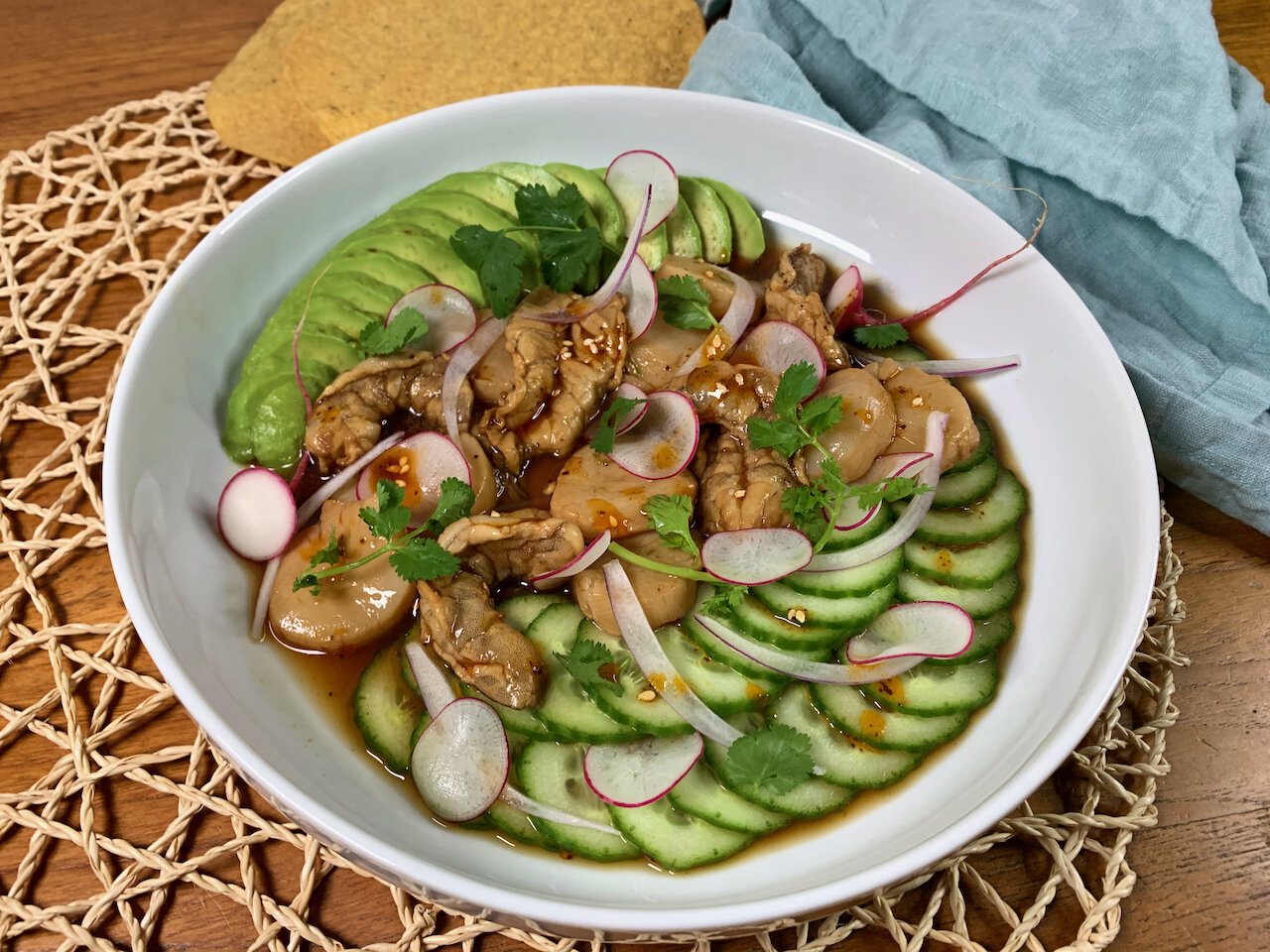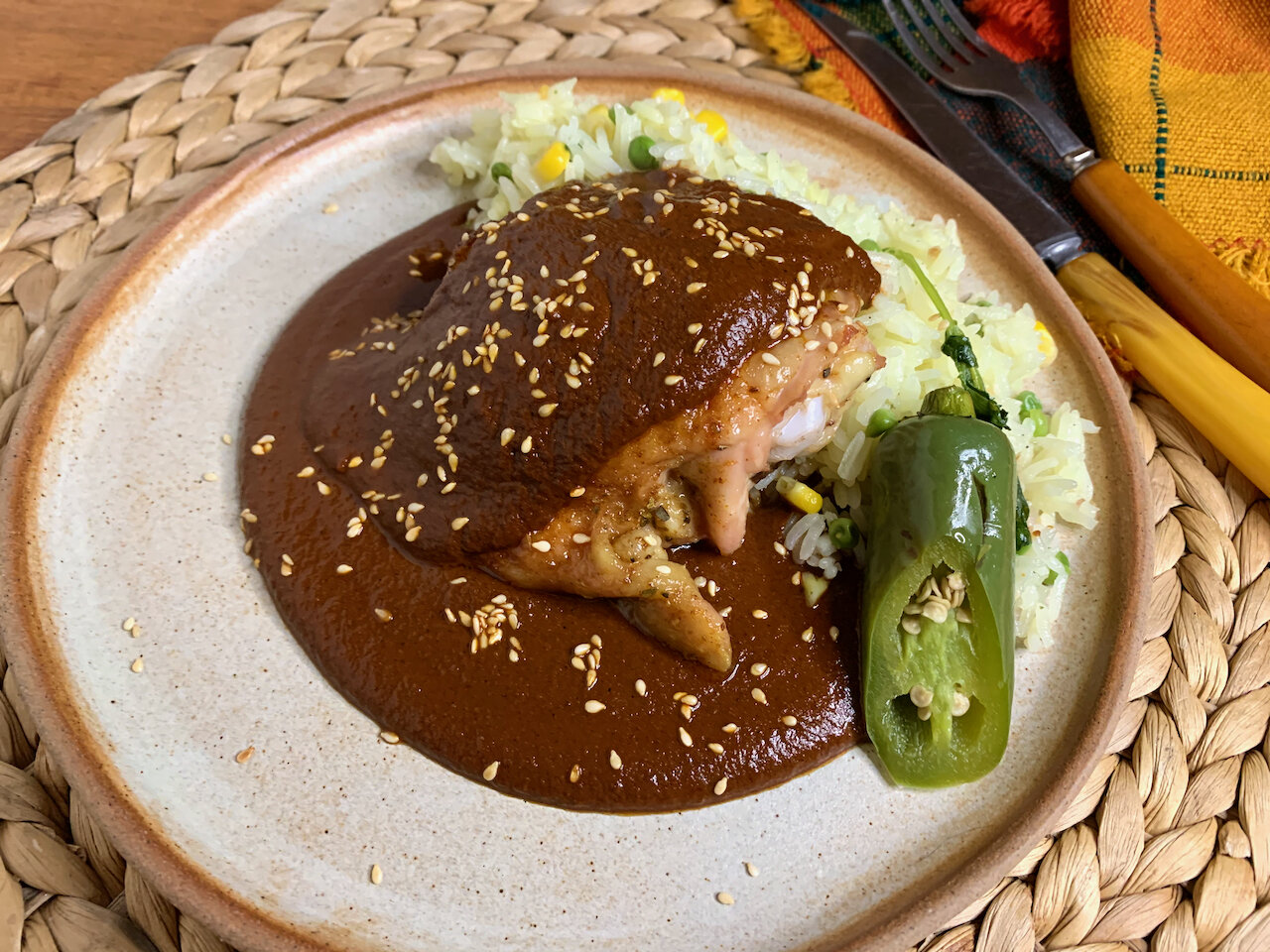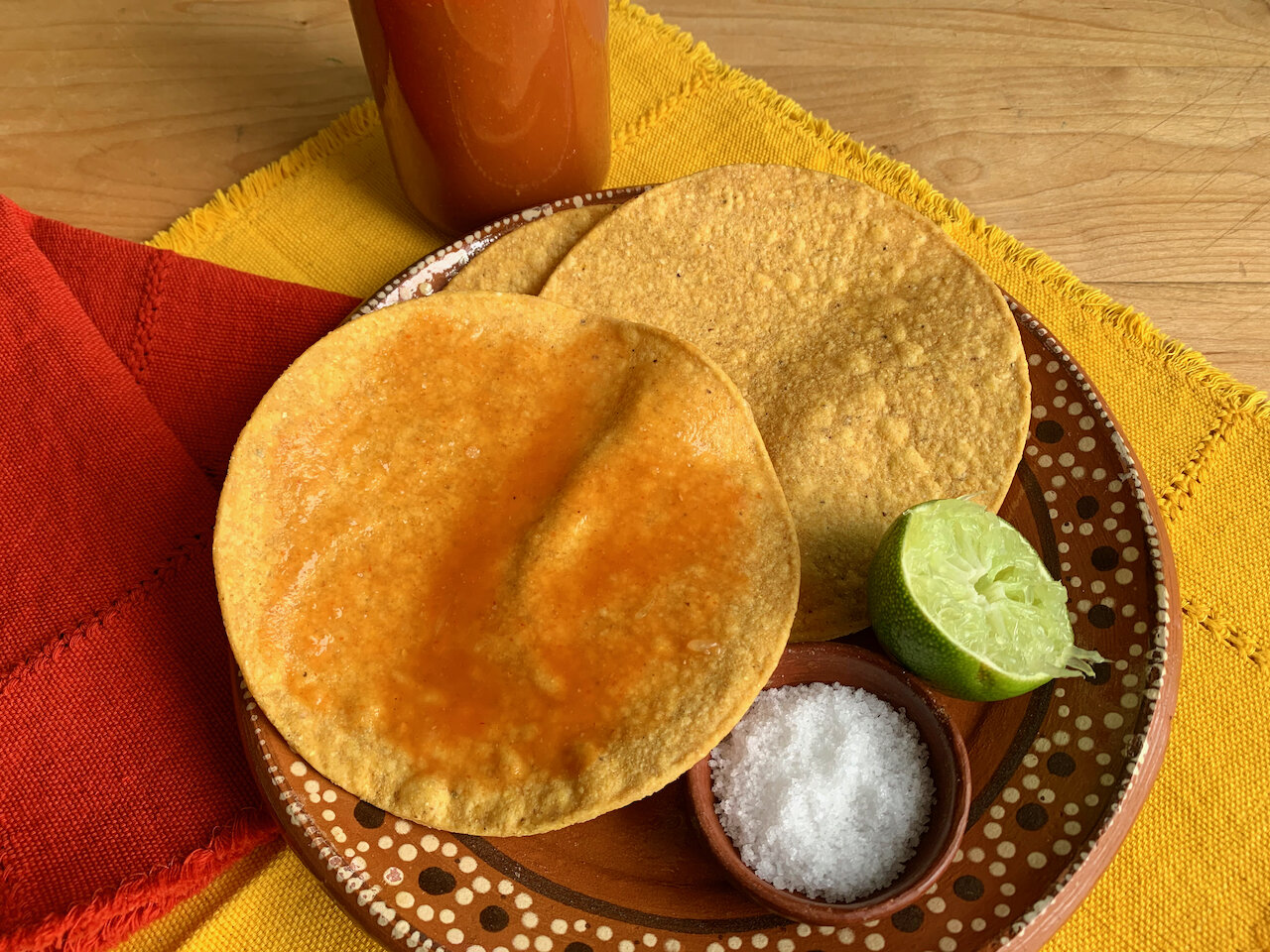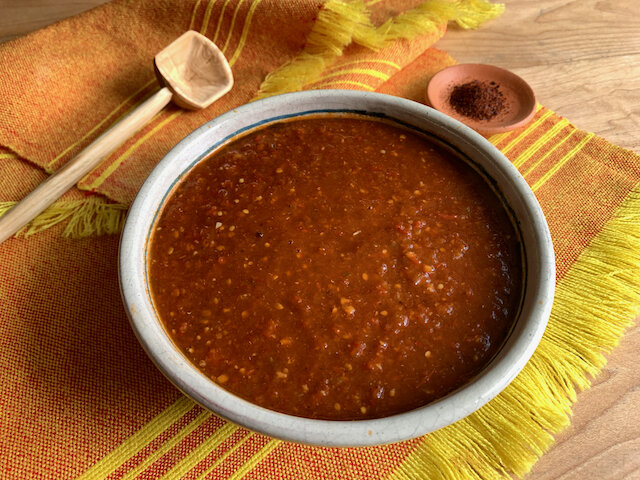A while back, I posted a photo of the huaraches I learned to make from my Nana, in Monterrey, and at that time, a well known Mexican chef gave me grief telling me what I made was not a huarache as it was not a filled masa cake.
You see, the huaraches in Mexico City (and other parts of Mexico) have a filling of beans, whereas in other parts of Mexico, the masa is cooked like a thick oblong tortilla and then topped with beans, salsa and the rest of the toppings. Same ingredients, different method, but all delicious.
It is very obvious that as Mexico is a huge country, there will be variations of methods from region to region, and this is a perfect example of that fact.
Having said that, there is no question that these bean filled Huaraches are delicious, and when you visit a market in Mexico City, you will invariably see the ladies making the biggest antojitos you have ever seen.
The word huarache is derived from the Purépecha word kwarachi, which means sandal, and it perfectly describes the shape and size of these treats! In the markets you will find the same bean fillings, made with different coloured masas, the toppings could be chorizo, shredded chicken, or thinly sliced steak, but always garnished with lettuce, salsa, cheese, crema and radishes.
This huarache in the photo is made with blue bolita Belatove maize I nixtamalized and ground into masa, but at home you can use the commonly found Maseca to make yours.
Whether you make the recipe with the beans inside the masa or on top like my Nana’s, you can be assured these will fly and will transport you to the markets of Mexico.
Huaraches de Frijoles con Chorizo
Bean Filled Masa Cakes with Chorizo
2 cups Maseca
1/2 tsp salt (optional)
1 Tbsp manteca (rendered lard) or shortening
2 - 2 1/2 cups warm water as needed for masa
200g Mexican chorizo
1 cup seasoned cooked pinto or black beans, drained
1/2 Tbsp chipotle chiles in adobo
1/4 cup manteca or vegetable oil
1 cup of your favourite salsa
3 cups shredded iceberg lettuce
1/2 cup grated cotija or feta cheese
2-3 radishes, thinly sliced
1/2 cup crema, or sour cream thinnned with a bit of milk
Cilantro leaves for garnish
In medium bowl, combine maseca, salt and lard. Slowly start adding warm water and knead until you have a smooth pliable dough. You may not need the full amount of water so start adding it slowly and only add what you need. Cover and reserve while you prepare the chorizo and beans.
In medium skillet, cook chorizo - you may not need any oil, depending on the chorizo you have. If you find it’s dry, add a tiny bit of vegetable oil to cook it, crumbling as you stir. It should be completely crumbled, and won’t take too long to cook, about 5 minutes. Reserve.
In blender or food processor, blend beans and chipotle chile. Mixture should be fairly dense, as they will be the filling for the huaraches. If they are too thick, add a bit of water, but make sure they are not runny.
Preheat comal, cast iron griddle or pan over medium heat. Divide masa into 8 portions. Line your board with a piece of plastic (a cut out resealable bag works great). Make an elongated shape with your masa and hold it in your hand. Make a dent in the centre and fill with about 2 tsp bean paste. Enclose the filling with the edges of the dough and gently roll into the cigar shape again.
Place dough on plastic and gently start pressing it as you stretch it with the palm of your hand. Continue to pat it down and stretching until your huarache is about 1/4” thick. It should have an oval shape and it will be about 12cm long.
Gently flip huarache with the plastic onto your hand. Peel off the plastic and transfer to the hot comal, gently laying it down onto hot surface.
Cook for 2 minutes and using a spatula, flip to cook the other side, another two minutes or until lightly browned. Continue with the rest of your huaraches. Place them on a rack as they come off the griddle. This can be made in advance.
To finish your huaraches, heat lard or oil in skillet and pan fry for 2-3 minutes per side, making sure they are crisped and warmed through.
Remove to a plate lined with paper towels to absorb some of that oil, then transfer to plates and spread with salsa and garnish with lettuce, chorizo, cheese, radishes, crema and cilantro.
Makes 8.





















